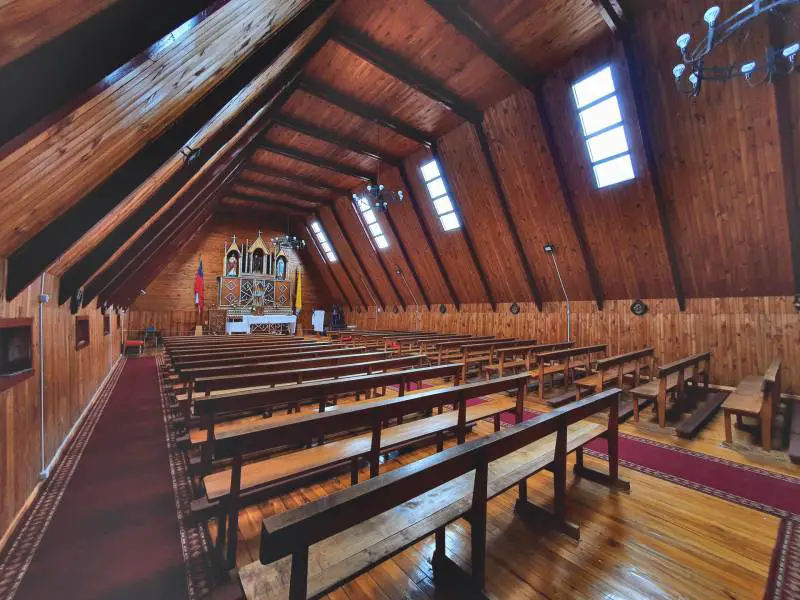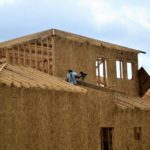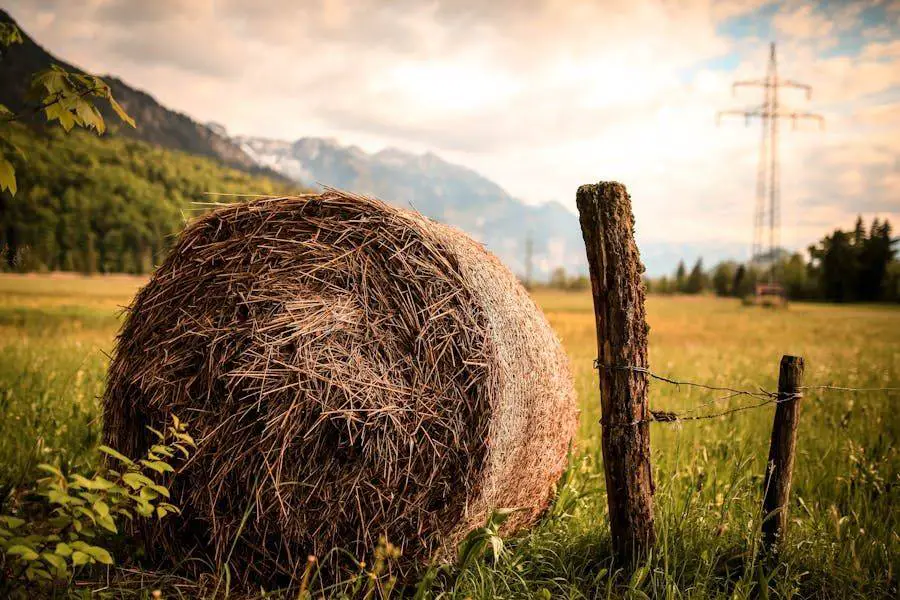Table of Contents

Insulation is a process in which your home is protected from external heat and sounds. The house is internally coated using various heat and sound-resistant materials.
Air is an excellent insulator; therefore, most coating materials have many tiny air pockets inside them to trap heat and sound. Insulation is used for resisting cold as well.
Insulation Of Roof Without Attic
The roof and ceiling are the most vital elements of your house when it comes to transmitting unwanted temperatures and sounds.
Let’s take a brief look at a few of the different insulation techniques most commonly used to insulate roofs and ceilings without an attic.
Bulk Insulation
Bulk insulation is a comprehensive process in which your entire house is coated with a selected material to protect it from unwanted temperatures and sounds. The coating acts like a cover or a sheath.
This type of insulation heavily depends on the underlying material and the concentration selected by the builders. The materials that are commonly used in bulk insulation include:
- Fiberglass. It is a covering material that is located in many houses without an attic. It consists of very light glass fibers. It is usually applied in two distinct insulation types: batts and rolls and loose-fill.
- Polyester roof insulation is a plastic product that is made up of petrochemicals. These products are mostly recycled plastic fibers. Others may be mixed with goods like wool.
- Extruded polystyrene insulation or XPS Insulation is produced through an extrusion method. Expanded polystyrene padding or EPS insulation is made while utilizing a mold to hold tiny foam beads.
- Rockwool produces its stone wool insulation by dissolving basalt and slag commonly and whirling it to produce fibers. This material is then made into insulation plates or insulation tubes that are used to cover residential, commercial, and modern buildings. Perfect for insulating the roof without an attic.
- Cellulose consists of 75-85% recycled paper texture, which is mostly waste newsprint. The rest of the 15% is a fire retardant such as boric acid or ammonium sulfate. Cellulose has the most eminent recycled content of any insulation obtainable.
- Wool insulation is produced from sheep wool threads that are either mechanically attached or bonded using between 5% and 20% recycled polyester adhesive to develop insulation batts, tubes, and strings. Original wool insulation is highly efficient for both thermal and acoustic padding.
Reflective Insulation
Reflective insulation is another name for foil insulation. It has also been known by other names, including the reflective barrier or radiant barrier.
All these names are used interchangeably. Make sure when you hear these, you don’t confuse this type of insulation with another.
This insulation process requires the coating of the roof or ceiling, both internally or externally, to resist and reflect solar radiation. It works best for fighting heat waves; therefore, it is more effective and efficient in warmer areas.
Spray Insulation
Spray insulation is probably the most DIY insulation for your roof without an attic. You can simply spray the foam into your wall cavities and cracks.
This method can also be used to spray ceilings collectively with batts and reflective foam insulation. Once sprayed, the foam solidifies and becomes a hard insulating material, and it can protect the concerned areas from heat and moisture.
See also: Running Ductwork In Attic – Challenges
Step By Step Guide To Insulating Your Roof Without Attic
Roof insulation is a tricky and complex process that requires tremendous skills and experience to achieve effectiveness and efficiency through accuracy.
We recommend you get the services of professionals rather than doing it yourself. However, if your looking to insulate your roof yourself as a DIY process, we have prepared this step-by-step guide to giving you a headstart.
- First off, you have to set the scene. This includes that you have the right tools to access and insulate your roof and the required materials. These tools will typically include a measuring tape, a tough pair of scissors, a saw, a drill, and a nail gun. You also have to take care of any electrical wiring that is already present inside the roof rafters. If you are insulating the roof from the inside, make sure that you have large stands under you to support you while you are standing or moving. Similarly, if you are insulating from the outside, and standing on the rafters, make sure you don’t put too much weight on the roof. Lastly, take care of the light as well. You should not be insulating your roof in the dark. Rather you should have ambient light present all the time during the roof insulation process.
- You also have to wear protective suits, gloves, and goggles, if the material of your choice is dangerous for your health. For example, the shards inside the fiberglass can be hazardous. Similarly, if you are using wool for roof insulation, you should be careful as it can also be disturbing.
- Before you start the roof, there are a few more things that you must take care of. You should clean the rafters and look for any cracks or holes. If you find any, you can fill these with spray foams or any other material you find suitable.
- Start by measuring a particular rafter area as well as the width. Note down these measurements along with the required thickness of insulation. Noting these measurements are important as the insulation thickness must not increase than the rafter width.
- In the case of wool insulation, you have to cut the wool rolls with the help of scissors before you place them inside the rafter and staple them to the rafters. Make sure these rolls are 50mm below the roof. You can add two layers of wool if the width of your rafters allows their insertion. You have to cover the entire rafter space similarly. Lastly, you can add a plastic sheet as well to cover up the wool insulation. While this insulation, you have to make sure that you don’t leave any spaces for the passage of air or light.
- In the case of rigid boards, you’ll have a much more precise board parliament as well. You can measure and adjust the board lengths before insertion among the rafters. Likewise, the width of these boards will depend on the width of the rafters.
Which One Is The Best Insulation For Your Roof Without Attic?
All the above-mentioned types of insulation are designed for different climate conditions as well as the built quality and materials of the buildings. If you want to insulate your house’s roof or ceiling, we suggest you deeply understand both of these facts.

Not one type is superior to the other. What matters is what type is more suitable for your particular house. Let’s briefly take a look at a few examples below of why different insulation techniques are used for different ceilings.
Insulation Of A Metal Roof Without Attic
Metal roof insulation approaches two significant purposes; preserving the interior temperature and blocking the substance from accumulating under the roofing. Providing a sheet of insulation under a metal roof is necessary as metal is generally a better heat transmitter than wood.
Quality insulation assists in retaining heat in the wintertime and keeps warm when the temperature drops. The best options to insulate your metal roof include:
Fiberglass Batts
Fiberglass batts are the most simplistic and affordable methods to protect a metal roof. Fiberglass consists of fine thread-like slices combined with other synthetic materials tightly twisted together to develop thick insulating padding.
Fiberglass is a very adaptable material that suggests that it can be cut into any diameter or breadth to embrace a surface. The shards of glass can be dangerous to work with for a novice; therefore, a professional is suggested.
Rigid Board
Rigid board insulation is employed anywhere within a home, including the foundation. The rigid boards are composed of panels of polyurethane and polystyrene.
The thicker the substance is, the more eminent the R-value will be. These boards are fixed under a metal roof panel and must be adjusted collectively. The joints should be sealed or caulked to accommodate most thermal protection.
Spray Foam
Spray foam is one of the most attractive insulation methods for metal roofs because it’s highly efficient. It’s useful for stopping compression and rodent infestation. This is a kind of polyurethane insulation whose R-value is defined by the inches.
Spray foam is very easy to work with, considering it can protect a new or old new metal roof without any disturbances. This insulation technique is more expensive than fiberglass.
Why Do You Need Attic Insulation?
Attic insulation has been gaining popularity tremendously among homeowners who want their living space to be energy efficient. You can’t underestimate the benefits of attic insulation like reducing air pollution, improving air quality, and lowering costs of heating and cooling. Attic insulation reduces the energy consumption by the heater to warm that particular area. All these pros make homeowners choose attic insulation that proves to be useful in the long run.
Now that you’re convinced of the insulation, let’s talk about the factors affecting the cost. Attic insulation involves the choice of material quality, amount of installation, and technique used for insulation. However, companies specializing in attic insulation will give you a free estimate of the cost based on your requirements.
What is a Roof With No-Roof?
Slated roof or vaulted roof is the term used for a roof with no attic. These roofs are made of tightly packed layers of slates lying perfectly upon one another. A vaulted roof is a great choice for homes where there is a lot of snowfall and is great to resist rainfall and sunlight.
Insulation Of A Cathedral Ceiling
Cellulose allows much greater insulating strength per inch and, related to fiberglass, provides more insulating capacity because ventilation space is not wanted.
In a restricted area such as a cathedral ceiling, cellulose contributes a much higher stated R-value.









